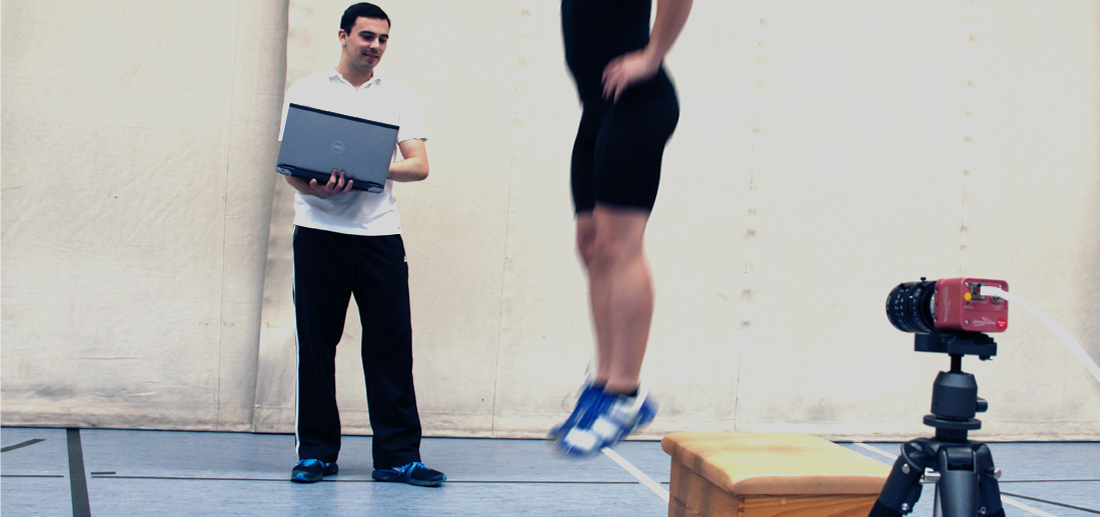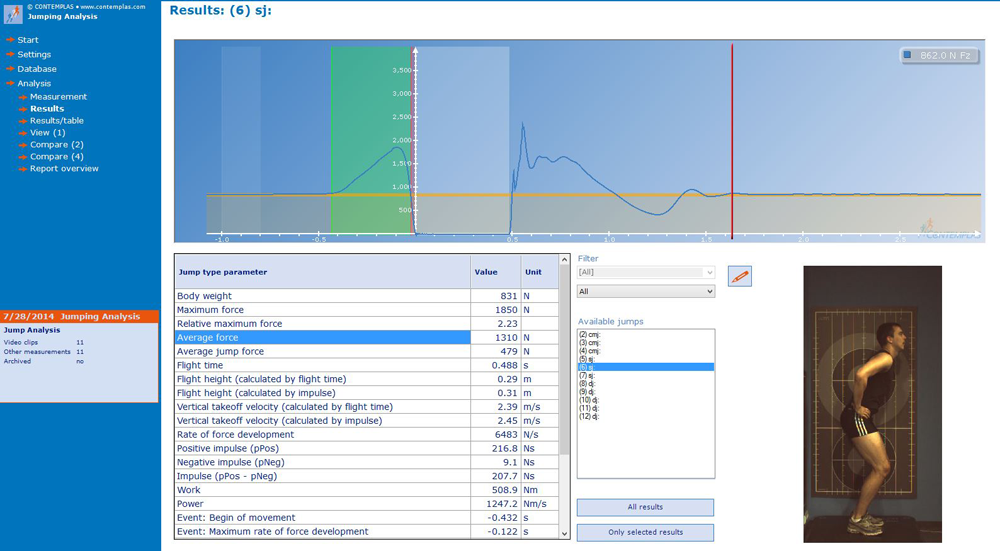Jump Analysis
Jump analysis involves the use of force measurement devices to analyze the different elements of particular types of jumps:
- Counter-Movement Jumps
- Squat Jumps
- Drop Jumps
By using one or two force plate(s) or pressure distribution measurement devices, jumps can be recorded immediately and analysed automatically. If used with a force-plate the A/D capture module is also required.
TEMPLO® jump analysis is designed for sport scientists and trainers, working with athletes and aiming to improve their jump coordination and performance in their specific sport.
Analysis of Counter-Movement Jump, Squat Jump, and Drop Jump
– Automatic analysis of collected data
– Compatibility with all force plates
– Extensive collection and organization of various data points
– Separation of different phases in the jump cycle
– Organization of test participants for efficient testing protocols
– Export of data
– Integration of high speed video capture with Jump Analysis Module
– Use of 2 force plates to measure the forces of each foot during all jump phases
– Integration of EMG systems alongside force plates
– Relative maximum force
– Mean force
– Mean takeoff force
– Flight time
– flight height
– vertical takeoff speed
– several others
Calculated jump events include:
– Initial contact
– Maximum and minimum force
– Start and end of flight
– Maximum rate of force deployment
– Flight time
– Contact time
- One of the following force plates – AMT, Kistler or Bertec
- According to the type of plate you choose, you may also need an A/D board
- Laptop or PC





